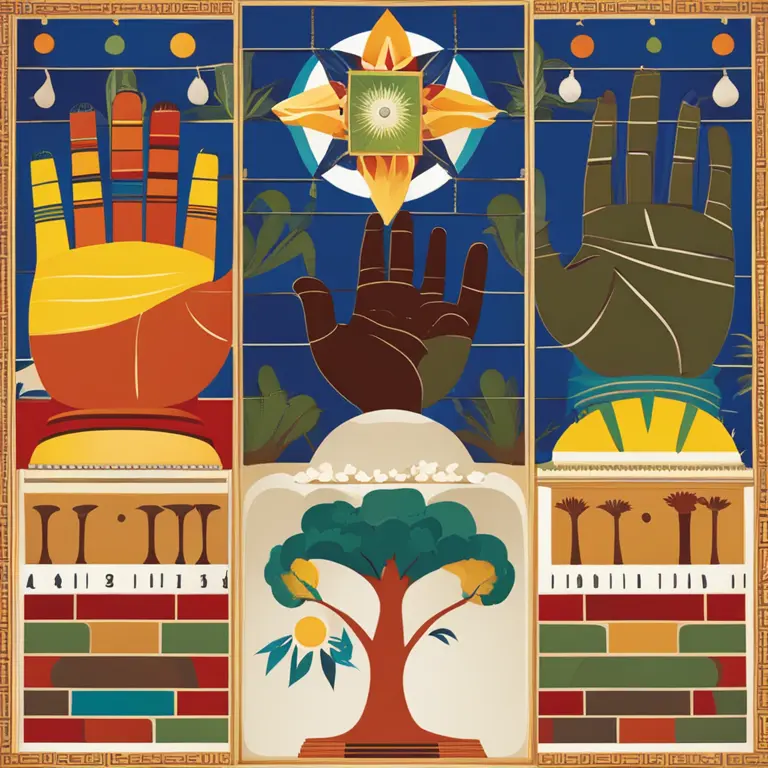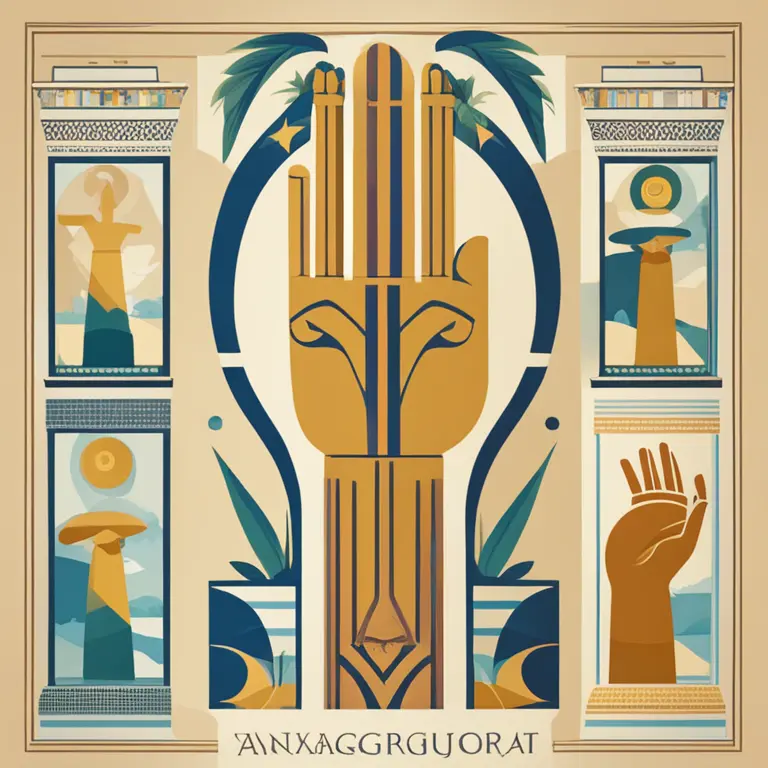
The Ancient Roots of Palmistry Explored
Tracing the ancient roots of palmistry, this article explores the fascinating journey of hand analysis from antiquity to modern times.
article by Nora Pennington
Introduction to Palm Reading
Palmistry, also known as chiromancy or palm reading, is the art of characterizing and foretelling the future through the study of the palm. This practice has enthralled human curiosity for centuries, bridging cultures and epochs. The history of palmistry is as rich and complex as the lines it examines, featuring a tapestry woven from global threads. While its true origin remains shrouded in mystery, scholars have traced its existence back to various ancient civilizations, each contributing to the art's development.

Ancient Beginnings
The earliest records of palmistry are attributed to ancient India, where Hindu sage Valmiki is said to have written a book consisting of 567 stanzas on the subject. From there, the knowledge of palmistry spread to China, Tibet, Egypt, Persia, and to other countries in Europe. It's fascinating to consider that despite the vast distances and cultural divides, the practice of reading hands became a ubiquitous tool for divination and self-understanding across the ancient world.

Greek Influence and Expansion
Palmistry's journey westward notably benefited from the fascination of ancient Greeks with divination. The philosopher Anaxagoras was a proponent of palmistry, and he influenced others in Greek society. His work, along with that of others, helped integrate the practice into Greek mythology and knowledge. Through Alexander the Great, palmistry found its way to Aristotle, who reportedly passed his insights to Alexander, further solidifying its place in Hellenistic culture and beyond.

The Middle Ages to the Renaissance
During the Middle Ages, palmistry was suppressed in Europe, associated with witchcraft and pagan beliefs, and it faced intense scrutiny from the Christian church. However, it saw a revival during the Renaissance, a period marked by a renewed interest in the mystical and esoteric sciences. Notable figures such as Paracelsus and Dr. Johann Hartlieb were instrumental in rekindling palmistry's acceptance, advocating its use as a science of the natural world.

Modern Developments
With time, the practice of palmistry adapted to new cultural contexts. In the 19th century, figures like Captain Casimir Stanislas D'Arpentigny and William John Warner, also known as Cheiro, brought palmistry to the fore of the public's imagination with their publications and celebrity consultations. These individuals and others like them helped to transition palmistry from mystical tradition to a topic of popular intrigue, bridging the gap between the ancient and the modern.
The Scientific Perspective
The modern era has seen attempts to validate palmistry through scientific means. While skeptics remain, the advent of psychological analysis and biometric data has introduced new dimensions to the interpretation of hand features. Despite the controversies, a number of psychological studies acknowledge that our hands can reflect certain personality traits or tendencies, offering a fascinating overlap with the claims of traditional palmistry.
Contemporary Palmistry
As we look beyond 2024, palmistry continues to evolve. Technological advancements in imaging and data analysis may provide palmistry with new tools for accuracy and personalization. The digital age has also ensured that palmistry's teachings and services are more accessible than ever before, as online platforms and apps bring the ancient art to the fingertips of a global audience.
Published: 1/11/2024
Modified: 1/12/2024
More predictions
Come back here soon to learn more about yourself and your future


The Possibility of Palmistry in Cancer Detection
Examining the claims that palmistry holds any potential in identifying the risk of cancer: a deep dive into the world of mysticism and medicine.


The Essence of Palmistry: Interpreting Lines and Shapes
Delve into the world of palmistry to discover the meanings behind the lines and shapes etched into the palms of your hands.


The Ancient Art of Vedic Palmistry
Discover the ancient art of Vedic Palmistry and its practice in the modern era, revealing the secrets held within the lines of the hand.